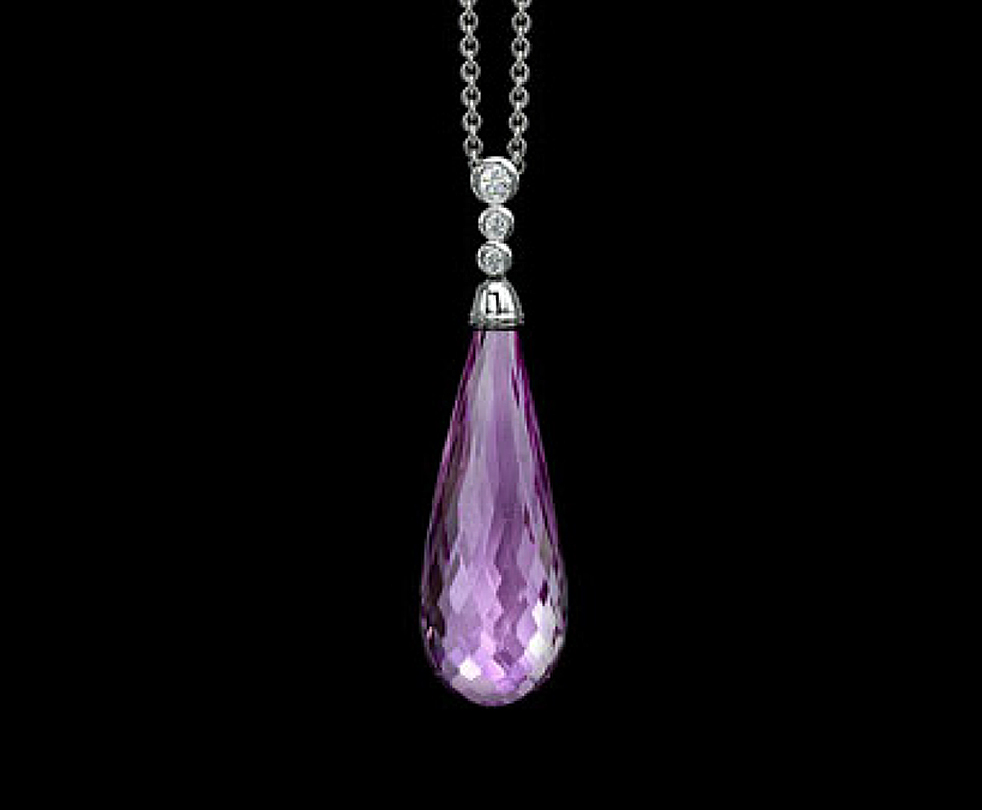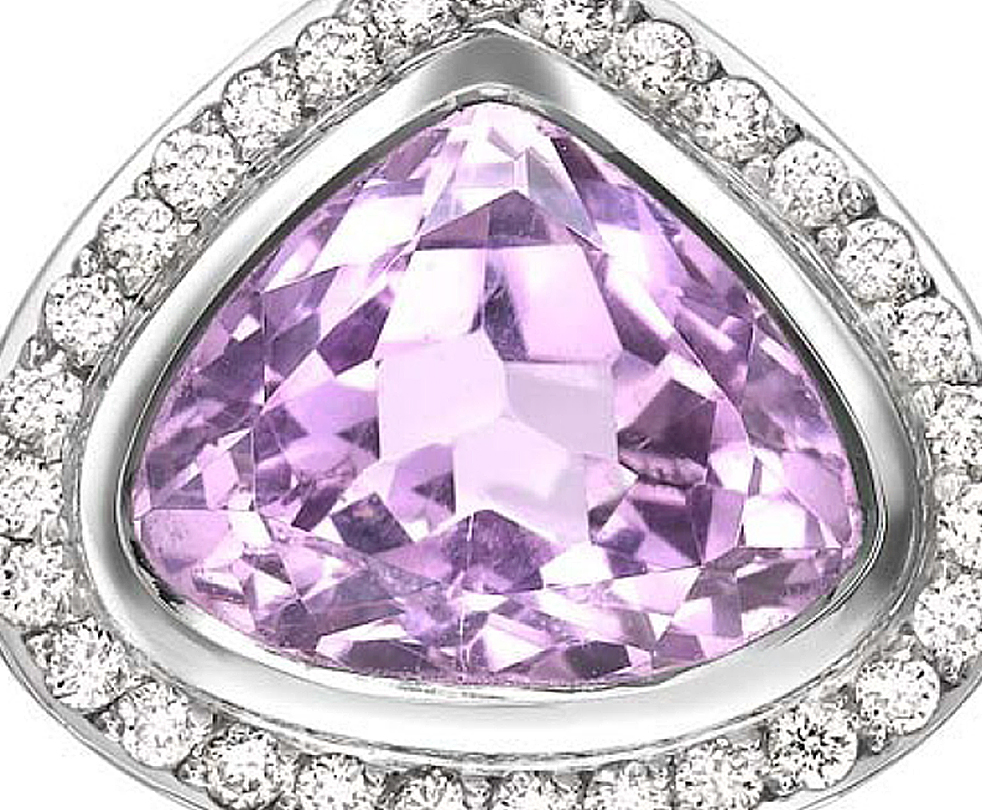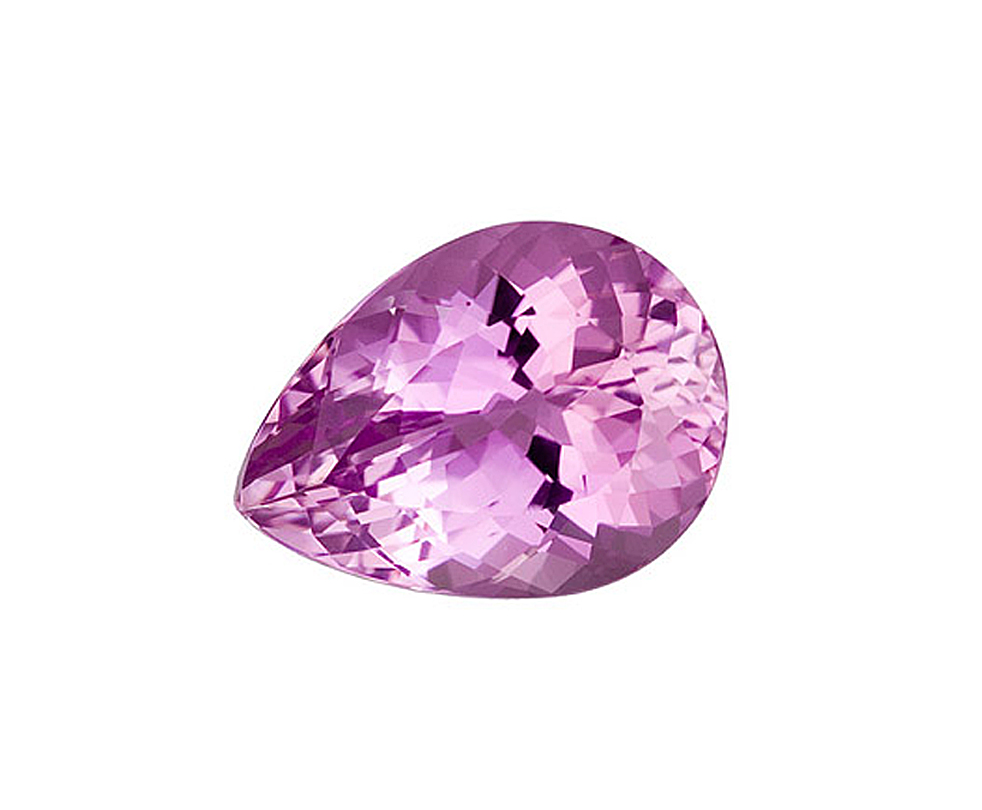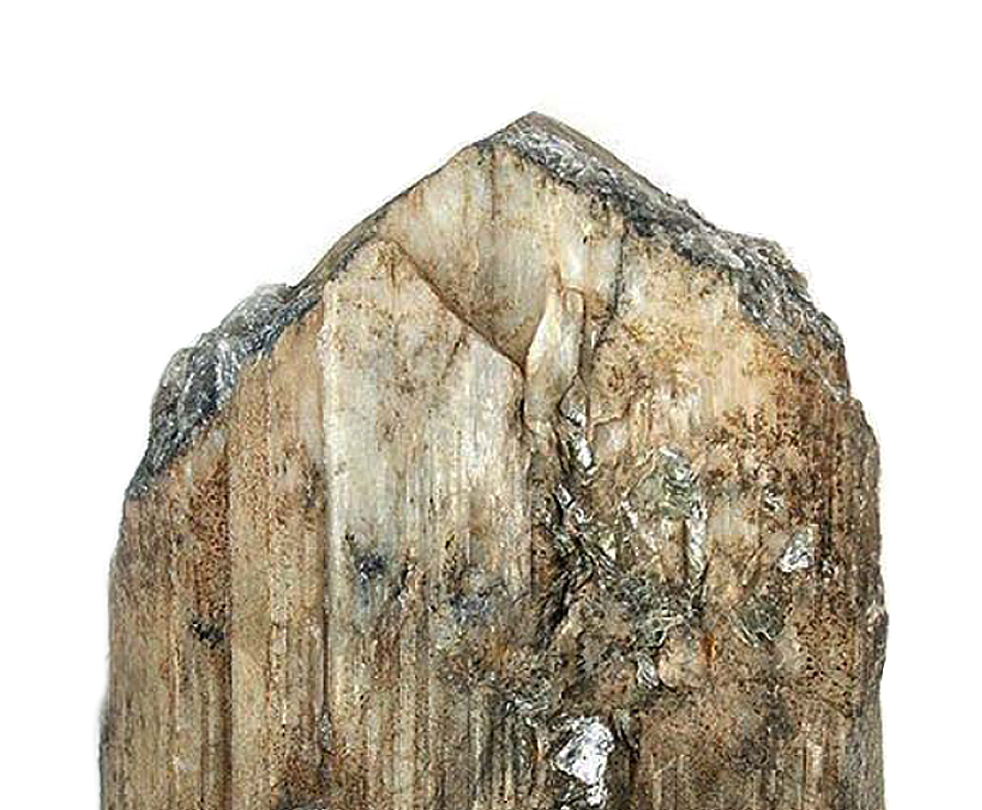Kunzite
Kunzite is currently found in Afghanistan, Brazil, Madagascar, and America. It was discovered relatively recently in 1902 in California after unidentified pink crystals were sent to the renowned gem specialist George Frederick Kunz. He confirmed that the crystals were a previously unknown type of Spodumene, their beautiful colour caused by manganese.
These new pink stones were named after him and from that point on were known as Kunzite. They are frequently found free from inclusions and can occur in large sizes. The Smithsonian Institution has one of the largest, a faceted heart-shape weighing in at 880 carats.
Care should be taken when displaying, wearing, cleaning and storing these gems as they are susceptible to breaking and the colour can fade with prolonged exposure to heat and intense light.
Description: Kunzite is the light pink to violet-purple variety of a mineral called Spodumene, which is found in various locations including Madagascar.
Hardness: 6.5 – 7 on Mohs Scale
Fact: It is named after G.F. Kunz, a famous gemologist.








